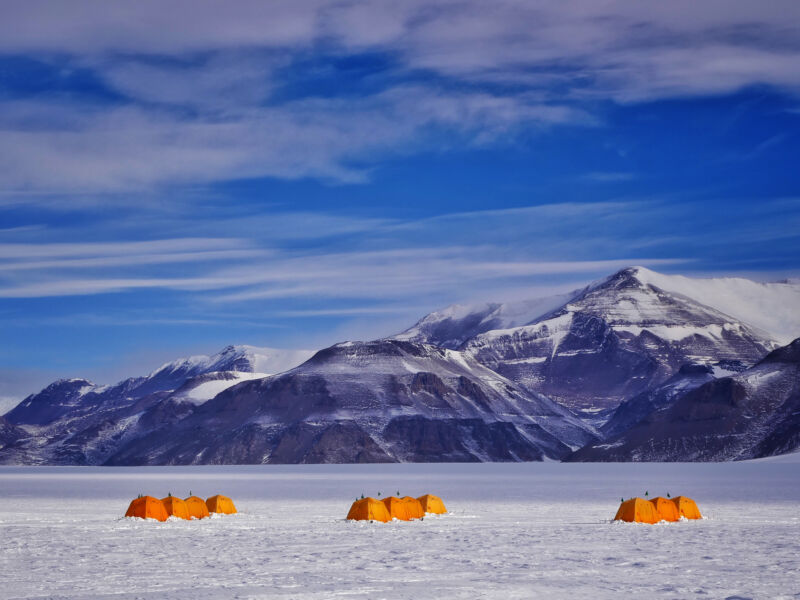
In September 2022, two months before Ph.D. student Megan Kerr was scheduled to board a military plane bound for the Antarctic ice sheet, she found herself in a conference room on Oregon State University’s campus, waiting to ask a question that had been nagging her for weeks. She sat intently through a presentation from the National Science Foundation Office of Polar Programs. Then, she raised her hand. The room full of graduate students turned in their chairs.
“This NSF report about all the sexual harassment that’s going on in the field,” she said. “What is the NSF going to be doing in the short term, also long term, about that?” Because “a lot of us are going into the field in like, two months.”
These students and about a hundred other researchers from roughly a dozen institutions had gathered at Oregon State University to kick off COLDEX, a 5-year, $25 million-dollar paleoclimatology project tasked by the NSF, the federal science agency, to find and drill a core of Earth’s oldest ice in Antarctica.
The report Kerr mentioned was the 273-page elephant in the room—a document the NSF released in late August detailing a decades-long history of pervasive sexual harassment and assault at Antarctic research stations. Almost three-quarters of women surveyed agreed that harassment was a problem, describing it as a “fact of life” on the continent. And 95 percent of women interviewed in focus groups knew someone who had experienced assault or harassment within the Antarctic program. To outsiders, the graphic details and matter-of-fact descriptions were shocking. But in the polar science community, the reaction was different.
When the report came out, “No one was surprised, other than the grad students,” Kerr said. She spoke with her principal investigators and supervisors, “and they were like, ‘Yeah, it’s been an issue for a long time.’ Okay, why is this the first time I’m hearing about it?”
Since middle school, Kerr wanted to go to Antarctica. This most recent field season, which typically takes place over the Austral summer, from mid-October to mid-February, she had finally been chosen as part of an eight-person COLDEX team to survey the ice sheet at Antarctica’s remote South Pole. She was one of two graduate students, and the only woman, on her team.
“It sucked because I was so excited for it, you know?” Kerr said. “This is a thing I wanted for years and years. And finally I got to do it, I’m getting to do it, and then I hear that oh, actually, it’s a terrible place to work if you’re a woman.”
COLDEX leadership thinks their initiative, with its unprecedented funding, unusually long timescale, and built-in commitment to diversify the polar sciences, could bring some change. But Kerr and her fellow graduate students worry the NSF response to a systemic, deeply entrenched culture problem has been surface level. They are also left wondering what the field’s path forward looks like.
Erin Pettit is an experienced polar researcher and COLDEX’s director of diversity, equity, and inclusion. Originally, her role was to guide the center in its mandate to recruit a more diverse team of researchers. But now, she’s also responsible for COLDEX’s response to the bombshell NSF report. To her, those goals are closely linked.
“Our biggest challenge actually stems from the fact that polar science started from white, male, Northern European explorations,” said Pettit. “And it is still very white and mostly male.”









